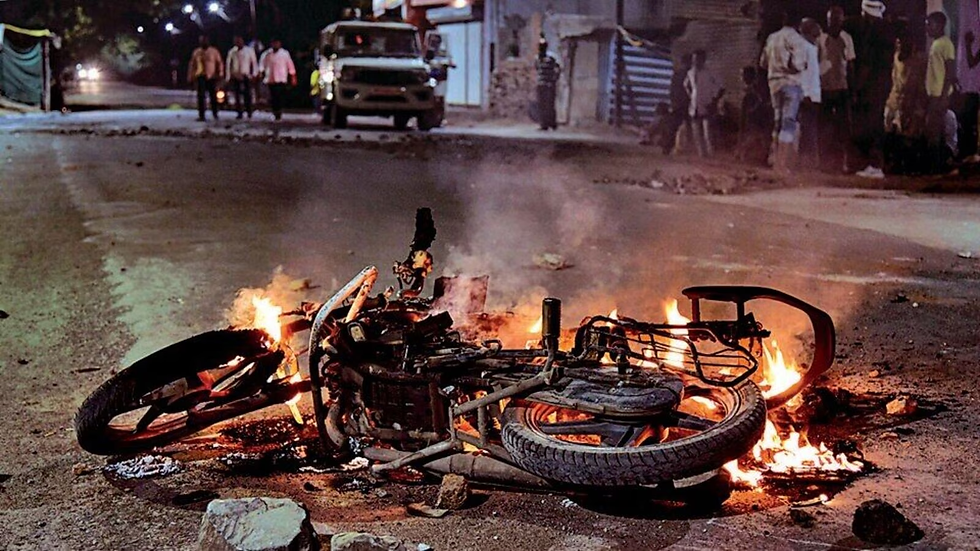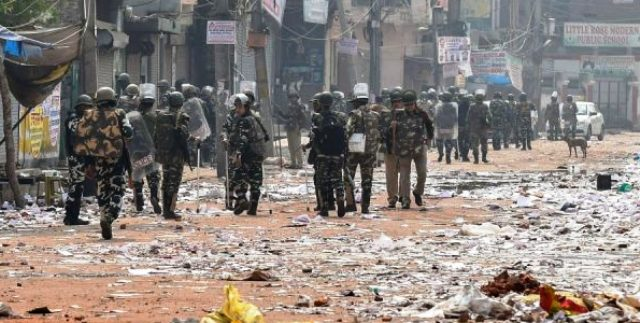“Violence is the last refuge of the incompetent.”
India, a nation of colors, a nation that is rich in integrity and diversity with nearly 1600 spoken languages and one of the oldest civilizations with many religions, castes, cultures, communities, and races.
One of the populous countries with each state having its own significance and differences like customs, rituals, language, beliefs, social status, and people belonging to various religions like Hinduism, Islam, Christianity, Buddhism, Jainism, and Sikhism. Despite the difference, we live in harmony making India a perfect example of unity in diversity. All the religions of India believe in dharma, a basic responsibility of an individual, and karma, the result of one’s actions creating a peaceful environment for coexistence.
India's unity can be clearly understood by liberation movements led by people of all religions, castes, and states. Even religious holidays and celebrations are celebrated together in a peaceful manner without causing harm or disrespect to other religious people. The unity amid differences makes India one of the most powerful nations in the world.
Beginning of Communal Riot in India
“Conflict always breaks companionship.”
Communal violence is a conflict or clash between two groups of people belonging to different religions, ethnicity, community, or culture. This violence has serious effects on democracy, in the development of the nation, social harmony, and national security.
Communal riots date back in India for a long time and continued to plague post-independence. The cases of riot increased post-independence mainly due to political causes to implement divide and rule policy as it will be easy to impose ideologies and also gain electoral benefits from people of the same caste or religion.

Source:- https://www.livemint.com/news/india/maharashtra-communal-violence-over-130-detained-in-akola-internet-shut-10-updates-11684168178849.html
Apart from political causes, the riot arises due to economic, social causes, and cultural factors too such as manipulating people in religious sentiments, for the acquisition of natural resources (water, land), and stereotypes against other communities, due to differences in status and lifestyle.
Communal violence in India is often associated with Hindu-Muslim conflict but it also involves other religions mainly minorities. These acts of violence are triggered due to elections, hate speech, land disputes, interreligious marriage, conversion, and migration.
Jinnah, leader of the Muslim League in India and also a member of Congress till 1920 was against the Khilafat movement but after Gandhi captured Congress, Jinnah left for studies in London. Gandhi started Khilafat as a large nationwide movement in Malabar in 1920, but in 1921 thousands of Hindus died in the Malabar riot and were forced to convert their religion during the six-month Moplah rebellion in the name of the Khilafat movement. Thus, Gandhi is said to have given birth to communal riots in India.
In July 1924, a communal riot started in Delhi after a Muslim kahara beat a Hindu boy at a park, the riot was carried out for 3 days and the tension lasted till December. Followed by Delhi, in Kohat in September 1924, a three-day riot was held in the North-West Frontier province causing a 155-casualty count with Hindu, and Sikh casualties more than Muslim casualties. Due to this riot, 3200 Hindus were evacuated. Reports say the kohat took place due to Hindus misbehavior towards the Muslims of the town.
In June 1926, on the death anniversary of Guru Arjan Dev, Rawalpindi communal riot occurred due to the tension between Sikhs and Muslims. Mohammadans objected to playing music in front of the mosque while Gurpurb passed the mosque. The next day there was tension created by rude comments the following day the Mohammadans charged inside Gurudwara while the congregation was held and attacked. The nearby shops were burned and during the riot, more than a dozen were killed and injured.
Recent Outbreak of Violence
In the northern state of Haryana after a religious procession led by the right-wing Hindu organisation violence broke out in the Nuh region against Muslims by smashing and breaking the properties and setting buildings on fire owned by Muslims.
On a train travelling to Mumbai from the south of Maharashtra violence broke out when a police officer opened fire on four people killing one officer and three Muslim passengers. The officer after firing said, “If you want to vote and live in India, then there is Narendra Modi and Yogi”. Thus, it is believed to be a hate crime against the Muslim minority population. A study says that between 2014 to 2018, after the BJP election, there was a 786% increase in hate crimes against all minority communities.
Aftermath Effects of Violence
“What you sow so you reap.”
Consequences of violence are no way pleasant because the result of a harmful action is always bad and has devastating effects on the society and the people living in that place. It breaks the peace of the community leading to a stressful and tense environment.
The most devastating effect of these riots is loss of life, which is an irreversible loss that affects the family of the victim for a longer term. Mostly these clashes involve breaking many families by killing innocent souls who have no hands in the clashes. It is always the innocent souls being sacrificed or fatally injured.

Source:- https://www.thedispatch.in/communal-violence-riots-cost-india-646-bn/
Destruction of places and shops is a common play that happens during a riot to show their rebellion, but that destruction destroys someone's livelihood is something that people forget during a riot, in order to show their hate, they break the sources of survival for people, including the innocent. Destruction of commercial and residential properties causes financial losses that impact several families creating an economic impact. When the riot targets religious sites it creates irreparable damage between the communities causing a clear differentiation between religion and a clear-cut mistrust between communities.
End note
Communal violence and riot happen because of the hate and difference we see in people, but at the end of the day, we all are human beings with no difference. There are many laws implemented to give rights to all the citizens of India that can be accessed anytime and anywhere, there are courts to fight for our rights. The existence of many religions is what makes India one of the most diverse countries and we can’t let that diversity differentiate us.
The language we speak, the religion we follow everything has its own beauty, a beauty that is meant to be cherished. Instead of differentiating our fellow Neighbours and friends, we should embrace it, accept and respect them as they are.
We were the same people who fought for our independence together without any differences so why can’t we stand together and fight for our rights and injustice without differentiating ourselves from others and without causing harm to anyone?
It is not easy but still, it is not difficult because “united we fight, united we win”.
Article by:- Sameeksha Chandra Sekar




Comments